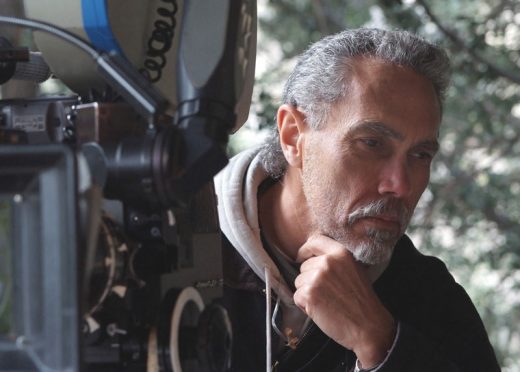Budget doesn’t sacrifice quality with these filmmakers
You can attend the Idyllwild International Festival of Cinema to just view the great movies. But you also can attend the seminars to learn and to hear stories about film making from the professionals.
This year, on March 9, festival founder Stephen Savage, and chair of the IIFC, is offering a seminar entitled “Bang for Your Buck: How to Make a Film for Less Than $500,000.”
Some studio films can spend that much on one actor or piece of equipment or renting a location. But the faint-hearted will be surprised and amazed at some of the films in this year’s festival, which were produced for less than $250,000, less than $100,000 and even less.
While Savage acknowledges “…with technology, anybody can make a movie,” he quickly adds, “but that doesn’t mean anybody knows how.”
This is the ninth year of the IIFC. Over this period, he has seen hundreds of films — shorts, features and documentaries — and he believes the quality of filmmaking is at an all-time high, but not because of the development of new and better technology.
“Over the last 12 years, while technology is better, the filmmakers have better visions. We’re starting to see an up swing in the festivals. It takes time to learn. They go to schools, they work and learn the craft before making their first feature film.”
While degrees and experience contribute, each individual benefits differently from those opportunities. Today’s successful filmmakers have other attributes in common that enable them to use their learning.
What these filmmakers have in common is a passion and dedication to their art; a desire or need to share that feeling. And, finally, they possess or manifest the ability to multi-process. That’s why many are producer, director and writer.
The source of this passion is inside them and cannot be taught. Jeff Fry, producer, director and writer of “Krieg,” started shooting the film in 2010. The film took more than seven years. When he started, he expected to be finished in less than two years.
But he had a message, which he felt had to be shared. “It came down to a personal vision,” he said. “An epiphany of experience — see how we need to live and treat each other.”

Manny Rodriguez Jr., the writer and director of “Butterfly Caught,” which was about 3 women at different stages of their acting careers. He felt the need to reveal the reality of Hollywood and the travails of aspiring actors. “It’s not just a few years, a commercial, a couple of scenes and then a contract,” he said. It’s how desperate they were. I was in a similar place, not as an actor but as a filmmaker.”
Good filmmakers have that internal urge to tell the world about their dreams, aspirations and fears. And they have to have “patience and perseverance,” as Fry said.
“It’s important to tell a story,” Kalilah Robinson said.
This desire to share a thought, a philosophy, to make a difference is manifest in the passion to achieve this goal. Consequently, they are not seeking a monetary reward, which is why they are so willing to produce the work on a low budget. Robinson produced “Lawman” for less than $50,000. She did have some advantages producing a student film for the American Film Institute, but she still needed a script, crew, actors, location and a vision.
“Dark Iris,” a feature film from Derek Talib and Rebekah Hart Franklin, was made for less than $100,000.
They accomplish these feats in many different ways. Some emphasize equipment, some location, some the actors, but all have a strong and poignant script, and the willingness to do whatever is needed.
They are behind the scenes, behind the camera, but in the forefront of making a piece of art that transcends. These people aren’t capable of tunnel vision. They are willing, able and driven to assume and complete whatever task is necessary to accomplish their mission. They are not “9 to 5” it’s-just-a-job people.

Photo courtesy Rebekah Hart Franklin, actor, producer, associate director, casting and other jobs for “Dark Iris”
As mentioned, Fry was the producer, director (his first time) and writer of “Krieg.” For “Dark Iris,” Talib was the director, writer and an actor. Franklin not only starred in it, but was a producer. Rodriguez wrote and directed “Butterfly Caught” as did Zach Brown for “Hard Surfaces.”
This passion for creativity and willingness to work 18-hour days and devote years to the enterprise exudes from these people. To complete the work requires them to find others who see or feel their vision, which is driving the principals.
They approach it differently. Some emphasize the acting at the expense of equipment, some favor the equipment and some take another direction. But all must convey their passion to everyone else involved in the project.
“Everybody was doing double duty. They were wearing five or six hats,” Fry said. On “Hard Surfaces,” Brown said everyone was doing double or quadruple work. “The challenge for all of us every day,” he said.
To get this effort and contribution requires not only the ability of principles to convey their passion but also for them to be crafty. When auditioning actors, Fry admitted that his decision was not simply who was best. Rather, he wanted to select people whom he could mold into a team that would work together in order to make “Krieg.”
“The key word is ‘trust.’ We want everybody to feel as comfortable as a good extended family,” Talib said. “If we make it, they make it.”
And this feeling of assurance and being a member of the team reaches beyond the cast and crew. Some of the films were able to obtain locations or catering for gratis, sometimes just a credit in the film.
Fry, who scrimped on equipment, shot with 35 mm film. But he went to Panavision and Eastman Kodak for assistance. “I got a $1 million camera for only $1,500.” Talib did it differently. He put his money into equipment.
Shooting a war movie in winter requires snowmaking equipment in Southern California. Fry got a snow business to provide equipment and train his staff.
Shooting a low-budget film is not easy. Taking Savage’s seminar will help. You will hear about post-production and how to market the final version, and learn many other important steps.
But it all starts with a vision and a passion for sharing it. Individual talent is not sufficient. Creativity goes beyond the art. One has to create a team that shares this desire to send a message.
One also has to be creative when problems or surprises arise. As Franklin said, “Many things can go wrong.”
The filming of “Butterfly Caught” was unexpectedly interrupted for six months. When Rodriguez was able to bring the team back together, he discovered that one of the major actors had cut her hair. In all of the previous work, she had long hair. He had to be creative about using wigs, different shooting angles and more.
It starts with a script. For all of these low-budget films, the writers were Fry, Talib, Rodriguez, Brown and Robinson — the vision starts there. Then “You have to be passionate and crafty,” said Brown.
And persistence, as Rodriguez stressed in “Butterfly Caught,” is critical.
But would they do it again. “I can’t wait to do it again,” Rodriguez said. Talib and Franklin agreed, especially with the lessons they learned the first time. So did the others; filmmaking is their passion. “I’m hungry for my next project,” Robinson said.
“Making a movie is really hard,” Savage emphasized. “Anybody who brings me a completed film, I appreciate. But If I can see the vision, it doesn’t matter about the quality.”










